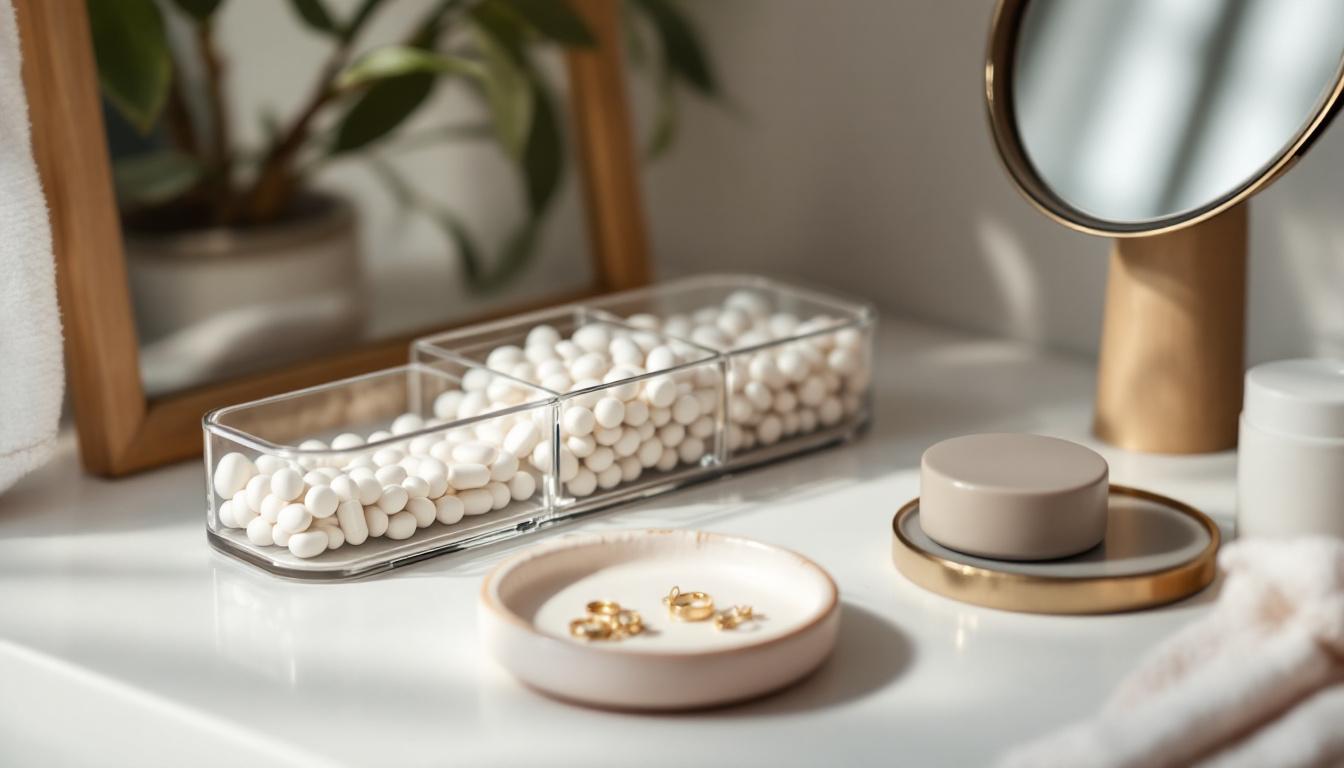Testosterone replacement therapy (TRT) isn’t just for men. Women also need this vital hormone, but in smaller amounts.
At SaltMD, we often see women concerned about testosterone replacement therapy side effects. Women considering TRT should be aware of potential risks and benefits.
This post will explore the common side effects of TRT in women and how to manage them effectively.
What is TRT for Women?
Understanding Testosterone Replacement Therapy
Testosterone Replacement Therapy (TRT) for women is a medical treatment that addresses hormonal imbalances. While often associated with men, TRT plays a significant role in women’s health too.
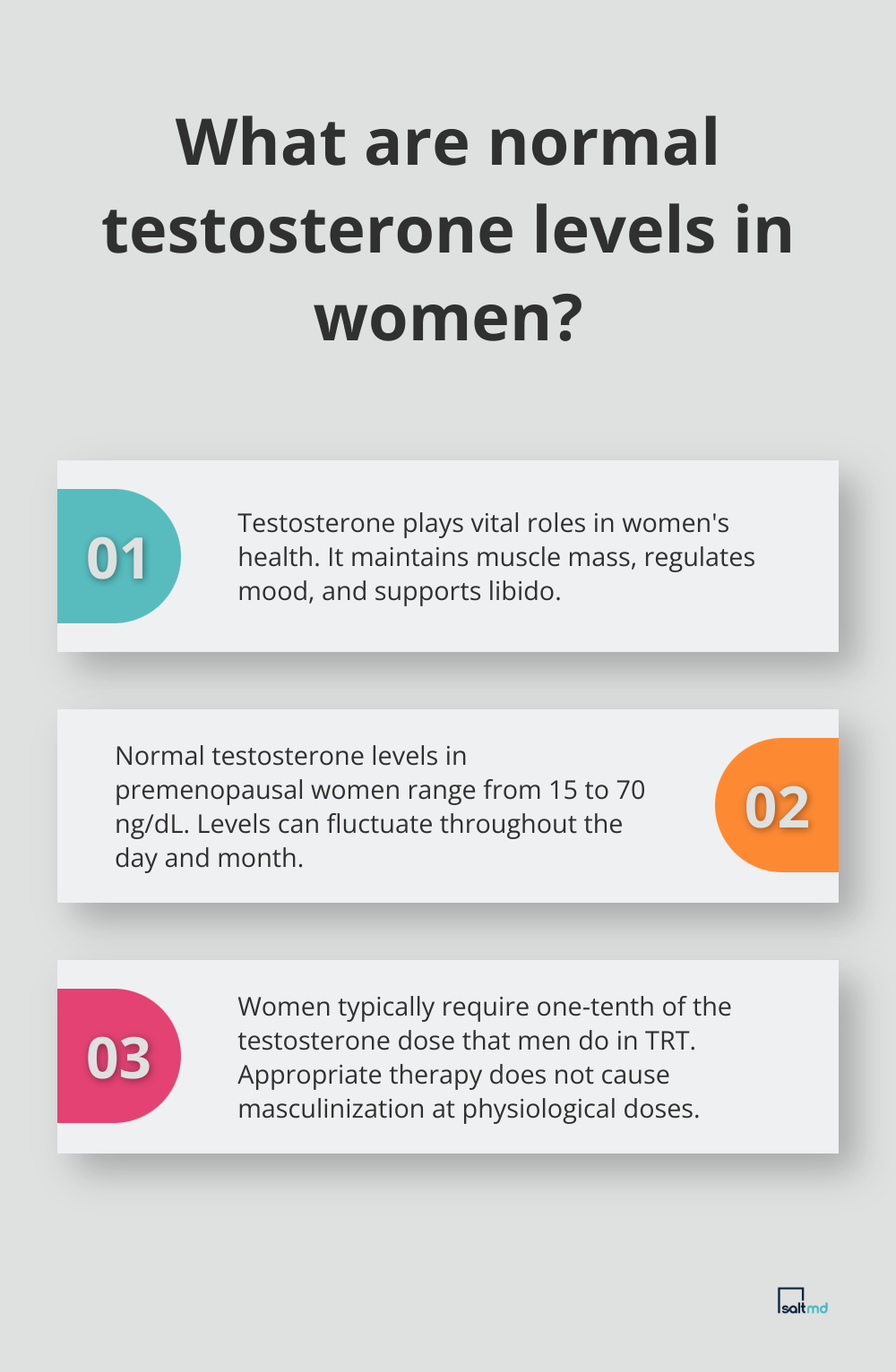
TRT supplements the body’s natural testosterone levels through various methods such as gels, creams, patches, or injections. For women, the dosages are significantly lower than those prescribed for men. Women typically require about one-tenth of the testosterone dose that men do.
The treatment aims to restore testosterone to optimal levels, not to masculinize women. A 2019 study published in The Lancet Diabetes & Endocrinology found that appropriate testosterone therapy in women does not cause masculinization when administered at physiological doses.
The Role of Testosterone in Women’s Health
Testosterone isn’t exclusively a male hormone. Women’s bodies produce it too, albeit in smaller quantities. It plays a vital role in:
- Maintaining muscle mass and bone density
- Regulating mood and cognitive function
- Supporting libido and sexual function
As women age, their testosterone levels naturally decline. This drop can become more pronounced after menopause or due to certain medical conditions. Some women might experience:
- Decreased sex drive
- Fatigue and low energy
- Mood swings or depression
- Difficulty concentrating
- Loss of muscle mass
These symptoms can significantly impact quality of life, prompting many women to consider TRT.
Normal Testosterone Levels in Women
Understanding what’s “normal” is essential. However, there’s no universally accepted range for women’s testosterone levels. The Endocrine Society suggests that total testosterone levels in premenopausal women typically range from 15 to 70 ng/dL.
It’s important to note that testosterone levels can fluctuate throughout the day and month. They’re also influenced by factors like age, menstrual cycle, and overall health.
The Importance of Professional Guidance
While TRT can benefit many women, it’s not a one-size-fits-all solution. The decision to start TRT should involve consultation with a healthcare provider experienced in hormone therapy. They can help weigh the potential benefits against the risks and ensure proper monitoring throughout the treatment.
A comprehensive blood panel, along with a thorough medical history, forms the basis of a personalized approach. Healthcare providers don’t just look at numbers; they consider each woman’s unique symptoms and health goals when determining if TRT is appropriate.
As we move forward, it’s essential to understand the potential side effects of TRT in women. This knowledge will help you make an informed decision about whether this treatment aligns with your health goals and expectations.
What Are the Side Effects of TRT in Women?
Testosterone replacement therapy (TRT) can transform many women’s lives, but it comes with potential challenges. Understanding these side effects allows for informed health decisions.
Skin and Hair Changes
Oily Skin and Acne
Increased testosterone levels often stimulate sebum production. This leads to oilier skin and potential acne breakouts. A study in the Journal of Clinical Endocrinology & Metabolism reported that up to 30% of women on TRT experienced some form of acne.
Unwanted Hair Growth
Hirsutism (unwanted hair growth) is another possible side effect. Women may notice increased hair on their face, chest, and back. The severity varies greatly among individuals, with some experiencing slight changes and others more significant growth.
Vocal and Libido Alterations
Voice Deepening
A less common but potentially permanent side effect is a deepening of the voice. This occurs due to the thickening of vocal cords under testosterone’s influence. While rare, it’s important to consider this possibility (especially for women who use their voice professionally).
Changes in Sex Drive
TRT often affects libido, but responses vary. Many women report an increase in sex drive, which is frequently a desired outcome. However, some experience a decrease or fluctuations in libido, which can cause distress. A 2019 systematic review in The Lancet Diabetes & Endocrinology found improved sexual function in postmenopausal women on testosterone therapy, but individual results differ.
Emotional and Mood Effects
Mood Swings and Irritability
Some women on TRT report mood swings and increased irritability. These changes can range from subtle to significant, impacting daily life. Some women feel more aggressive or easily agitated.
Impact on Mental Health
A study in the Journal of Sexual Medicine found that about 5% of women on TRT experienced mood-related side effects. However, many women also report improved mood and reduced depression symptoms with properly managed TRT.
Precise dosing and ongoing monitoring are essential to minimize these side effects. Not all women will experience these issues, and many find that TRT’s benefits outweigh the potential risks.
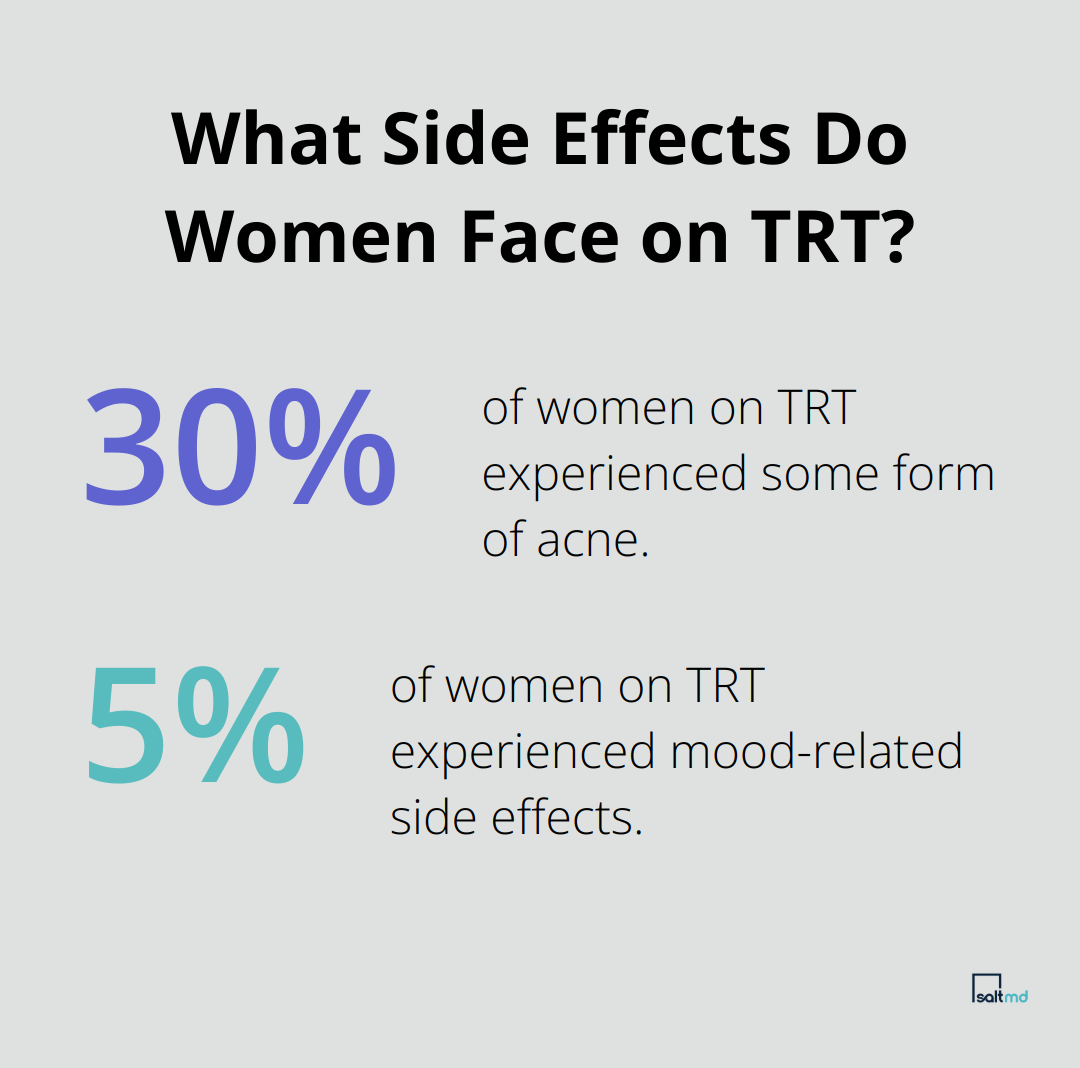
The next section will explore strategies to manage and minimize these side effects, ensuring you can maximize TRT’s benefits while reducing potential drawbacks.
How Can Women Manage TRT Side Effects?
Precision Dosing and Regular Monitoring
Successful TRT management requires precise dosing and consistent monitoring. Dr. Rebecca Glaser, a hormone therapy expert, advises starting with the lowest effective dose and increasing gradually as needed. This method helps minimize side effects while allowing the body to adjust.
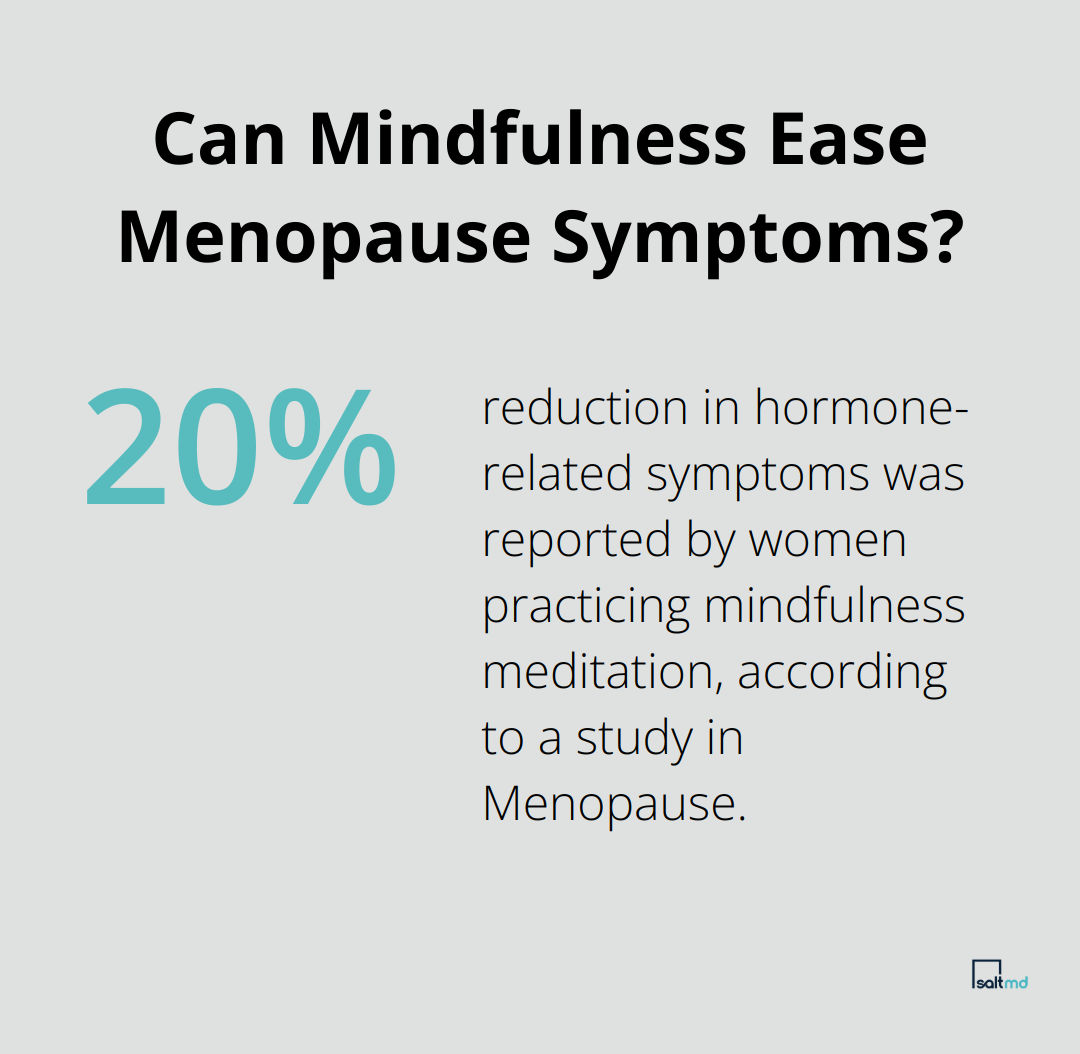
Blood tests play a vital role in TRT management. The North American Menopause Society recommends testing every 3-6 months during the first year of treatment, then annually. These tests track testosterone levels and other important markers (such as lipid profiles and liver function).
Lifestyle Modifications for Hormone Balance
Lifestyle changes significantly impact how your body responds to TRT. A study in the Journal of Clinical Endocrinology & Metabolism found that women who exercised regularly experienced fewer side effects from hormone therapy.
Diet also plays a crucial role. The Mediterranean diet, rich in omega-3 fatty acids and antioxidants, supports hormone balance. A 2020 study in Nutrients linked this diet to improved hormone profiles in women undergoing hormone therapy.
Stress management is equally important. Chronic stress disrupts hormone balance and worsens TRT side effects. Mindfulness meditation shows promise in reducing hormone-related mood swings. A study in Menopause reported that women practicing mindfulness experienced a 20% reduction in hormone-related symptoms.
Exploring Complementary Treatments
Some women enhance TRT benefits while reducing side effects by combining it with other treatments. Bioidentical hormone replacement therapy (BHRT) gains popularity. Unlike synthetic hormones, bioidentical hormones are chemically identical to those your body produces naturally, potentially leading to fewer side effects.
Peptide therapies offer another promising avenue. These short chains of amino acids target specific biological functions without the broad effects of hormone therapy. For instance, PT-141 has shown potential in improving sexual function in women without affecting testosterone levels.
Topical treatments help manage skin-related side effects. For acne, products containing salicylic acid or benzoyl peroxide prove effective. For unwanted hair growth, topical eflornithine slows facial hair growth in women.
Personalized Approach to Side Effect Management
Every woman’s response to TRT differs. What works for one may not work for another. Open communication with your healthcare provider is essential to tailor your treatment plan and ensure the best possible outcomes.
Try to keep a detailed log of any side effects you experience. This information helps your doctor make necessary adjustments to your treatment plan. Some women find that changing the method of testosterone administration (e.g., from gel to injections) can alleviate certain side effects.
Final Thoughts
Testosterone replacement therapy for women offers potential benefits, but it also comes with side effects. These side effects can include skin changes, unwanted hair growth, vocal alterations, libido fluctuations, and mood swings. The severity and impact of testosterone replacement therapy side effects in women vary from person to person.
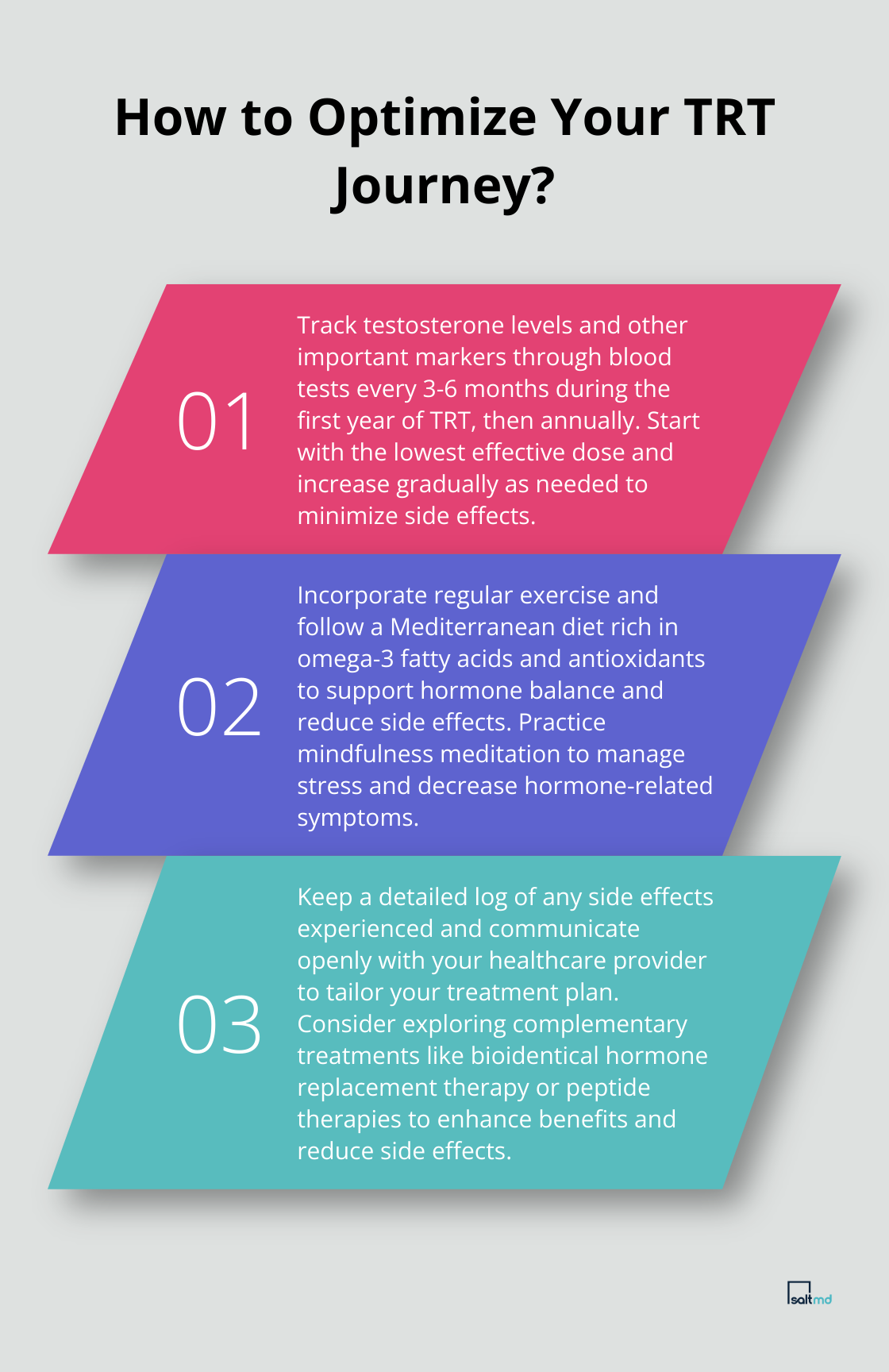
Successful TRT management requires close collaboration with a healthcare provider. Regular monitoring, precise dosing, and personalized treatment plans help minimize risks while maximizing benefits. Lifestyle modifications such as exercise, diet changes, and stress management support hormone balance and reduce side effects.
At SaltMD, we understand the complexities of hormone therapy and offer personalized approaches to optimize your health. Our evidence-based treatments focus on tailored peptide therapies and hormone optimization to help you achieve your wellness goals. Open communication with your healthcare provider and consistent monitoring are key to successful hormone therapy.

